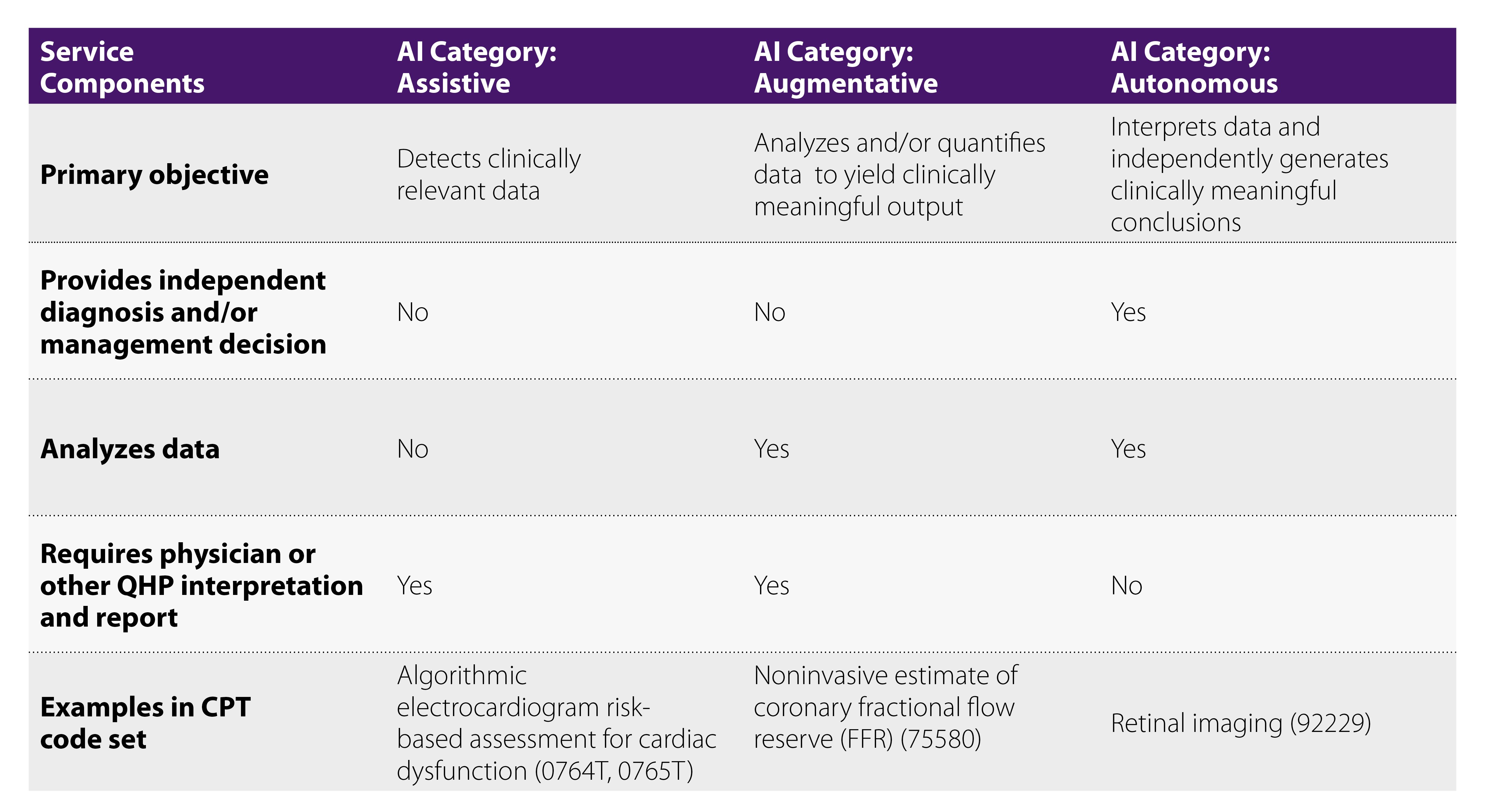At its September 2021 meeting, the CPT® Editorial Panel accepted the addition of a new Appendix S to provide guidance for classifying various artificial intelligence/augmented intelligence (AI) applications. This guidance should be consulted for code change applications (CCAs) which describe work associated with the use of AI-enabled medical services and/or procedures.
This taxonomy provides guidance for classifying various artificial intelligence/augmented intelligence (AI) applications (e.g., expert systems, machine learning, algorithm-based services) for medical services and procedures into one of three categories: assistive, augmentative or autonomous.
Three categories for AI applications
AI as applied to health care may differ from AI in other public and private sectors (e.g., banking, energy, transportation). Note that there is no single product, procedure or service for which the term “AI” is sufficient or necessary to describe its intended clinical use or utility; therefore, the term “AI” is not defined in the code set.
In addition, the term “AI” is not intended to encompass or constrain the full scope of innovations that are characterized as “work done by machines.” Classification of AI medical services and procedures as assistive, augmentative or autonomous is based on the clinical procedure or service provided to the patient and the work performed by the machine on behalf of the physician or other qualified health care professional (QHP).
Assistive classification
The work performed by the machine for the physician or other QHP is assistive when the machine detects clinically relevant data without analysis or generated conclusions. Requires physician or other QHP interpretation and report.
Augmentative classification
The work performed by the machine for the physician or other QHP is augmentative when the machine analyzes and/or quantifies data to yield clinically meaningful output. Requires physician or other QHP interpretation and report.
Autonomous
The work performed by the machine for the physician or other QHP is autonomous when the machine automatically interprets data and independently generates clinically meaningful conclusions without concurrent physician or other QHP involvement. Autonomous medical services and procedures include interrogating and analyzing data. The work of the algorithm may or may not include acquisition, preparation, and/or transmission of data. The clinically meaningful conclusion may be a characterization of data (e.g., likelihood of pathophysiology) to be used to establish a diagnosis or to implement a therapeutic intervention. There are three levels of autonomous AI medical services and procedures with varying physician or other QHP professional involvement:
Level I—The autonomous AI draws conclusions and offers diagnosis and/or management options, which are contestable and require physician or other QHP action to implement.
Level II— The autonomous AI draws conclusions and initiates diagnosis and/or management options with alert/opportunity for override, which may require physician or other QHP action to implement.
Level III— The autonomous AI draws conclusions and initiates management, which require physician or other QHP initiative to contest.
Download Appendix S




